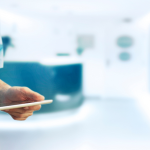Unveiling Sensor Calibration: The Art of Precision in Measurements
In the intricate realm of scientific and technological advancement, accuracy is paramount. Whether it’s diagnosing illnesses, administering medications, or conducting complex experiments, reliable measurements form the bedrock of success. Enter the unsung hero of precision: sensor calibration. In this article, we’ll demystify what sensor calibration is, explore its pivotal role in ensuring accuracy, and delve into the foundation it provides for reliable measurements across various fields.
The Foundation of Reliable Measurements:
Think of sensor calibration as the cornerstone upon which the edifice of reliable measurements is built. Without calibration, measurements can become distorted, leading to inaccurate conclusions and potentially disastrous outcomes. When sensor readings can impact patient care, scientific discoveries, or manufacturing precision, ensuring their accuracy becomes paramount.
A well-calibrated sensor acts as an anchor point for accurate measurements. It provides a reference against which other measurements can be compared. This reference point allows scientists, engineers, and healthcare professionals to confidently interpret data and make informed decisions.
Understanding Sensor Calibration: A Closer Look:
At its core, sensor calibration is the process of fine-tuning sensors to provide accurate readings. Picture a compass that gradually loses its true north. Similarly, sensors, over time, might experience “drift” – a subtle but consequential shift from their original accuracy. Calibration steps in to recalibrate these instruments, ensuring they regain their precision and reliability.
The Purpose of Sensor Calibration: Bringing Accuracy to Life
The primary purpose of sensor calibration is to rectify inaccuracies and drift that sensors may encounter over their operational lifetime. This recalibration process serves several critical functions:
- Preserving Accuracy: Sensors are designed to be accurate, but environmental factors, wear and tear, and electronic changes can alter their performance. Calibration adjusts the sensor’s internal settings to maintain or restore its accuracy.
- Enhancing Reliability: Reliable measurements are essential in industries like healthcare, manufacturing, and research. Calibrated sensors ensure that decisions made based on collected data are sound and trustworthy.
- Quality Control: In production processes, calibration ensures that products meet specified standards. It guarantees that measurements taken during manufacturing are consistent and valid.
- Regulatory Compliance: Many industries have strict regulations for accuracy and quality. Regular sensor calibration is often a requirement to meet these standards.
- Scientific Research: Accurate data is the cornerstone of scientific research. Calibrated sensors ensure that experiments and observations yield meaningful and reproducible results.
Conclusion: Elevating Precision Through Calibration:
In a world driven by data, sensor calibration is the linchpin that upholds accuracy and trustworthiness. By adjusting sensors to provide accurate readings and compensating for drift and inaccuracies over time, calibration ensures that measurements remain reliable and meaningful. This foundational process is a testament to our commitment to precision in fields ranging from healthcare to scientific research and beyond. In the grand symphony of technology and science, sensor calibration is the note that ensures every measurement resonates with accuracy and clarity.






